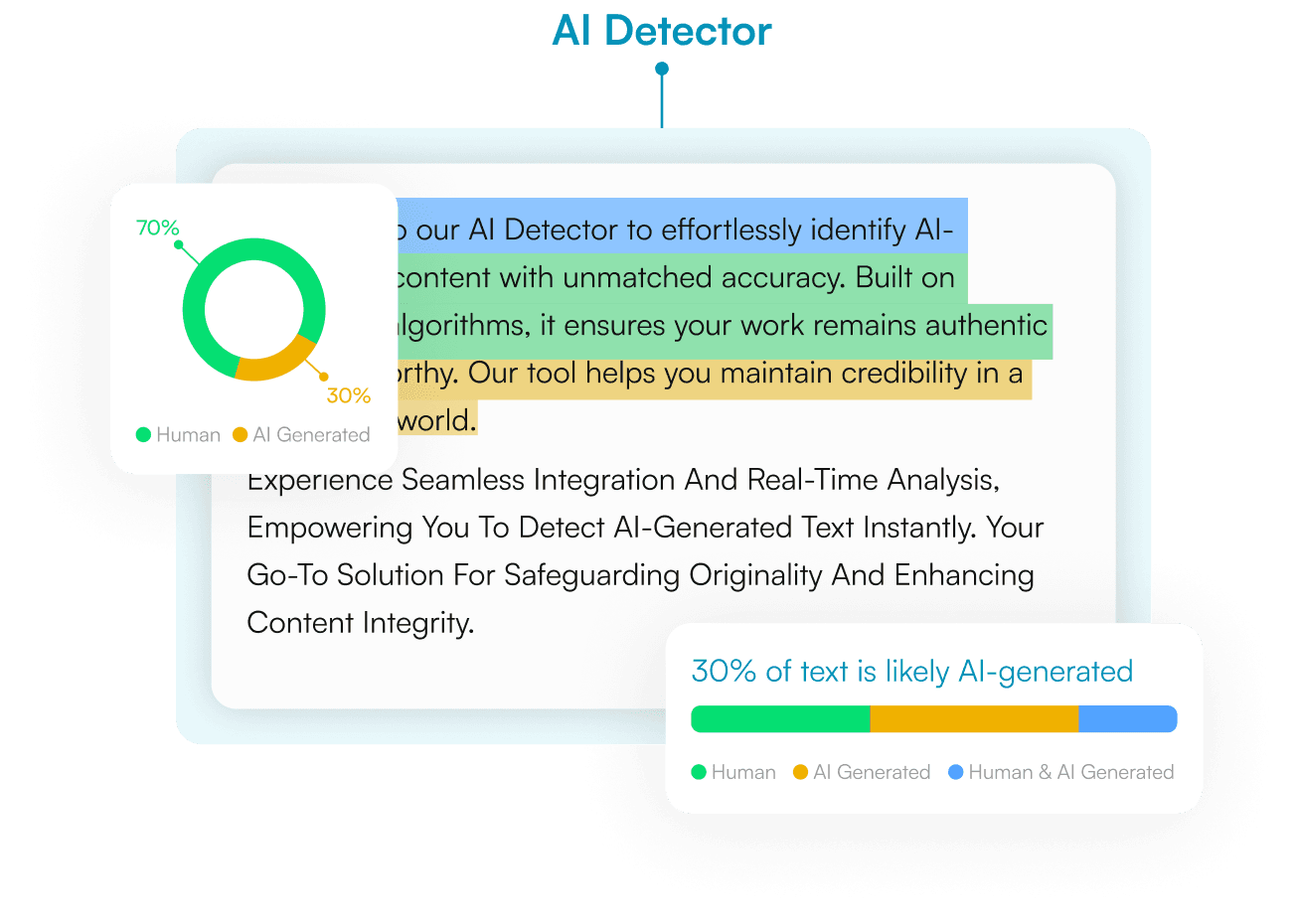Artificial intelligence has transformed the way we interact with technology. From writing blog posts to generating images, AI is everywhere. While these tools can be helpful, they raise an important question: how do we know if a piece of content was created by a human or by artificial intelligence? This is where the AI detector becomes essential.
An AI detector is a tool designed to identify whether content—text, images, or even videos—has been produced by artificial intelligence. In today’s world, where authenticity matters more than ever, these detectors help protect originality, fight misinformation, and maintain trust across industries.
Why Do We Need an AI Detector?
Artificial intelligence has reached a level where AI-generated content looks very close to human work. While this is impressive, it also creates risks. For example:
-
Academic Integrity
Students may use AI tools to generate essays or reports. Without an AI detector, teachers may find it difficult to evaluate genuine student performance. These detectors help maintain fairness and honesty in education. -
Business and Marketing
Companies publish blogs, product descriptions, and articles to connect with customers. If search engines identify content as AI-generated, websites could lose rankings. Using an AI detector ensures the material is human-written and maintains brand credibility. -
Misinformation and Fake News
AI can generate convincing fake news stories or manipulated images. With an AI detector, journalists and readers can verify sources and prevent the spread of false information. -
Creative Industries
Writers, designers, and artists want recognition for their original work. An AI detector helps differentiate between authentic creativity and machine-generated copies.
How Does an AI Detector Work?
An AI detector uses advanced algorithms to analyze content and look for hidden patterns. While a casual reader may not notice the difference, a detector can pick up signs that reveal AI involvement.
Here are the most common techniques:
-
Linguistic Analysis: AI often writes with perfect grammar but sometimes lacks natural flow. A detector looks for repetitive phrases, unusual word choices, and robotic sentence structures.
-
Statistical Models: Detectors compare the probability of words and sentence patterns with databases of known AI-generated text.
-
Watermarking Technology: Some AI companies embed invisible watermarks in their generated content. Detectors can identify these signals.
-
Machine Learning: The best detectors improve with time. They learn from analyzing large volumes of data, which makes them more accurate in spotting AI-generated content.
Benefits of Using an AI Detector
Using an AI detector provides clear advantages in many fields. Some of the most important include:
-
Trust and Transparency: Readers and customers feel confident that they are engaging with authentic human content.
-
Quality Control: Businesses maintain originality in their communication, avoiding penalties from search engines.
-
Ethical Standards: Schools and universities can enforce fair practices in learning and assessments.
-
Legal Protection: Detecting AI-produced content helps prevent plagiarism and copyright violations.
Challenges of AI Detectors
Even though AI detector tools are powerful, they are not perfect. Some challenges include:
-
False Positives: Sometimes, human-written content may be incorrectly flagged as AI-generated.
-
Evolving AI Models: Newer AI systems like GPT-5 are harder to detect, which means detectors must constantly adapt.
-
Dependence on Technology: While detectors are useful, human judgment is still important in evaluating content.
AI Detector in Education
Education is one of the biggest areas where an AI detector is necessary. Teachers need to ensure students are doing their own work. With the rise of AI tools, some students might rely too heavily on technology.
AI detection tools give educators the ability to check assignments, essays, and research papers. At the same time, schools are teaching students how to use AI responsibly, rather than banning it completely. This balance encourages learning while keeping integrity intact.
AI Detector in Business and SEO
For companies, content is the foundation of digital marketing. Blogs, product pages, and online guides help build trust with customers. But if too much AI-generated content is published, search engines may penalize a website.
By using an AI detector, businesses can ensure their content remains human-focused, original, and SEO-friendly. This improves customer engagement and strengthens brand identity. Companies that combine human creativity with AI support—and check quality with detectors—often perform the best.
Future of AI Detectors
The demand for an AI detector will only increase in the future. As AI tools become more advanced, detectors must evolve to stay ahead. Some upcoming trends include:
-
Integration into Writing Platforms: Detectors may be built directly into word processors and content management systems.
-
Multimedia Detection: Future detectors will not only analyze text but also AI-generated images, audio, and videos.
-
Real-Time Detection: Online platforms could use detectors to flag AI-generated content instantly before it is published.
-
Detailed Reports: Advanced detectors may provide insights into how much of a text is AI-written versus human-written.
Final Thoughts
Artificial intelligence is shaping the future, but it also blurs the line between human creativity and machine production. To maintain authenticity, transparency, and trust, the AI detector plays a vital role.
From education to business and journalism, these tools ensure content remains genuine and reliable. As AI continues to grow, detectors will become even more important in protecting originality and encouraging responsible use of technology.
The future of digital content will not only depend on how AI evolves, but also on how effectively we use tools like the AI detector to maintain integrity.



